Abstract
In order to deduce the predominant haplotypes in Japanese narcoleptics, we have studied a total of 111 Japanese patients with narcolepsy and six multiple-case families for HLA class I and class II antigens, and for class III HLA-linked complement markers. In Japanese narcoleptics, the most frequent haplotypes were B35-DR2, B15-DR2, and B51-DR2. These haplotypes were rare in normal Japanese population. In contrast, the most frequent haplotype of HLA-DR2 in normal Japanese, A24-C blank-Bw52-C4A*2 B*Q0-BF *S-C2*C-DR2-DQw1, had a decreased frequency to one-third of the normal controls. Haplotypes B35-DR2, B15-DR2, and B51-DR2, which were more frequent among Japanese narcoleptics, were different from the haplotype found more frequently among Caucasoid narcoleptics, A3-Cw7-B7-DR2-DQw1. Haplotype analysis on six families showed that B35-DR2 and other rare haplotypes in normal Japanese were associated with narcolepsy. There were four cases without any signs of narcolepsy among 19 subjects with the disease susceptibility haplotypes. This finding suggests an incomplete penetrance of hypersomnia. Haplotype analysis of family members was also useful for the early detection of the high risk children to narcolepsy.
Full text
PDF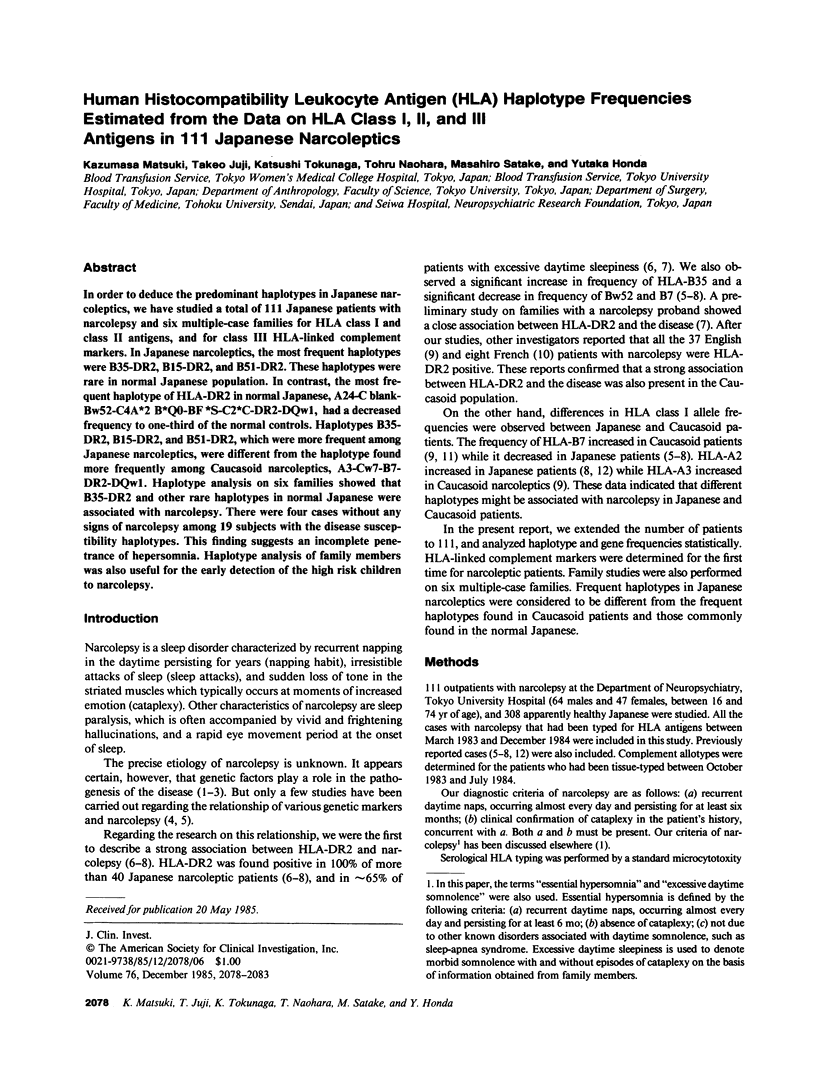
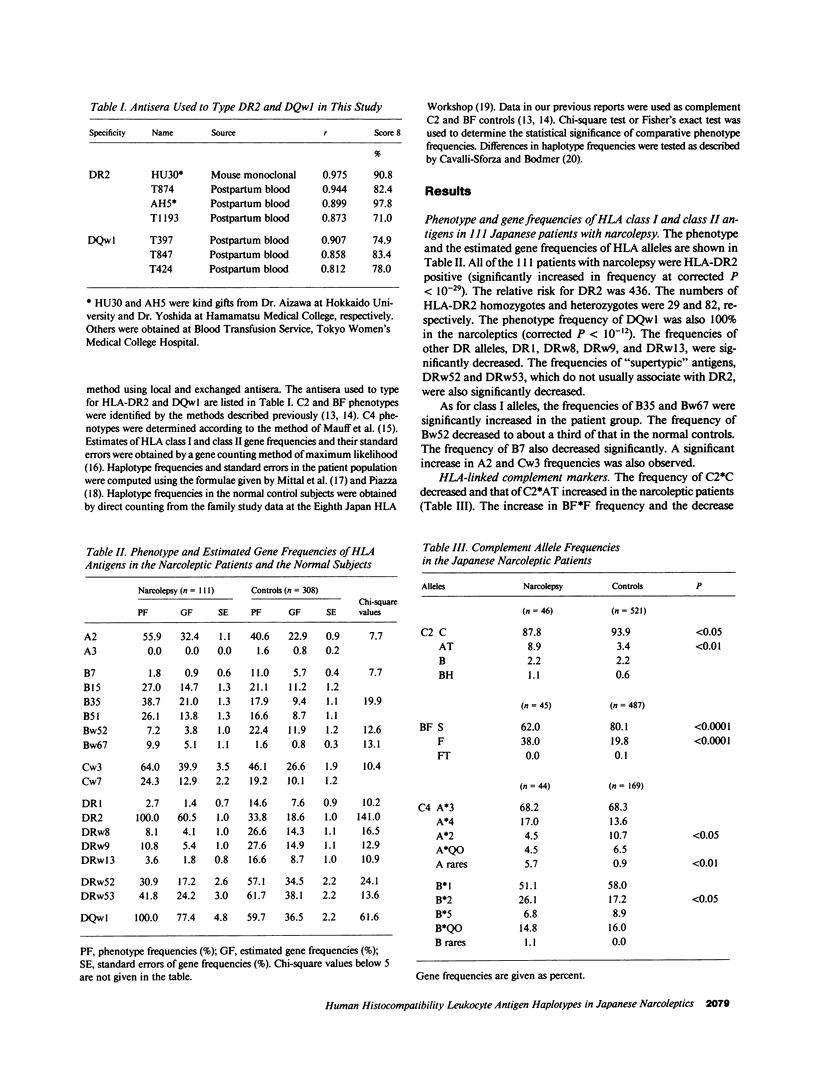
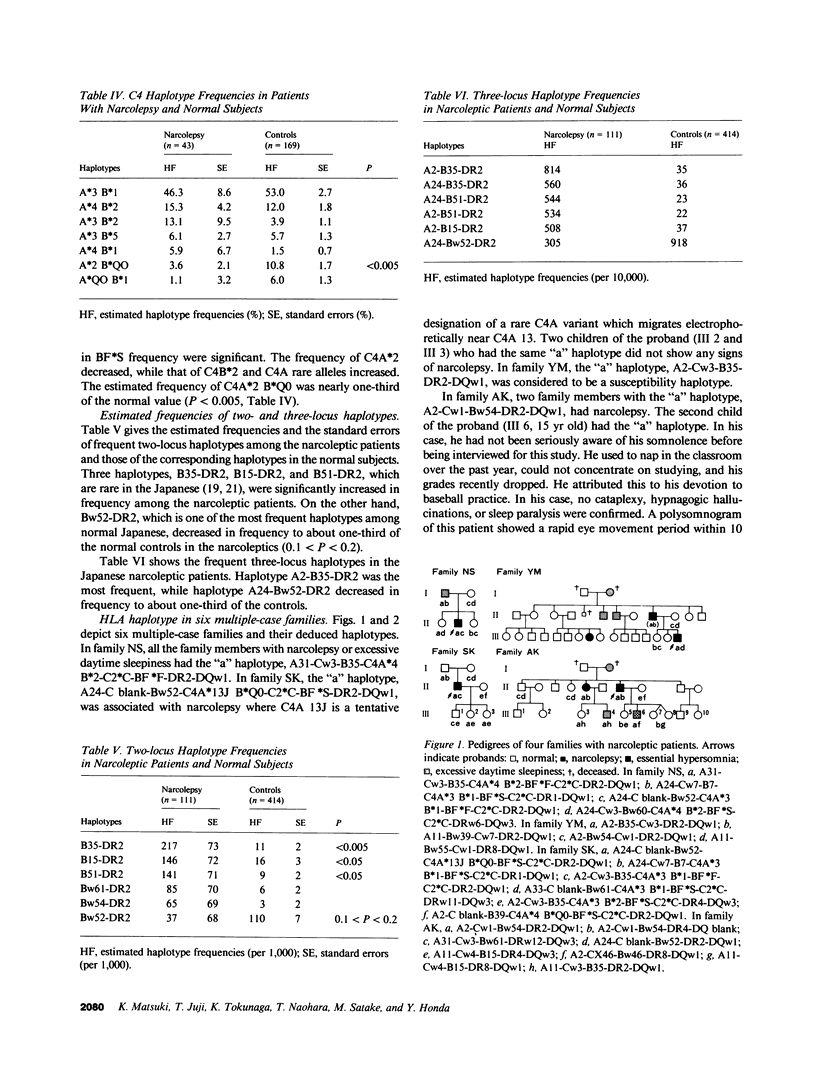
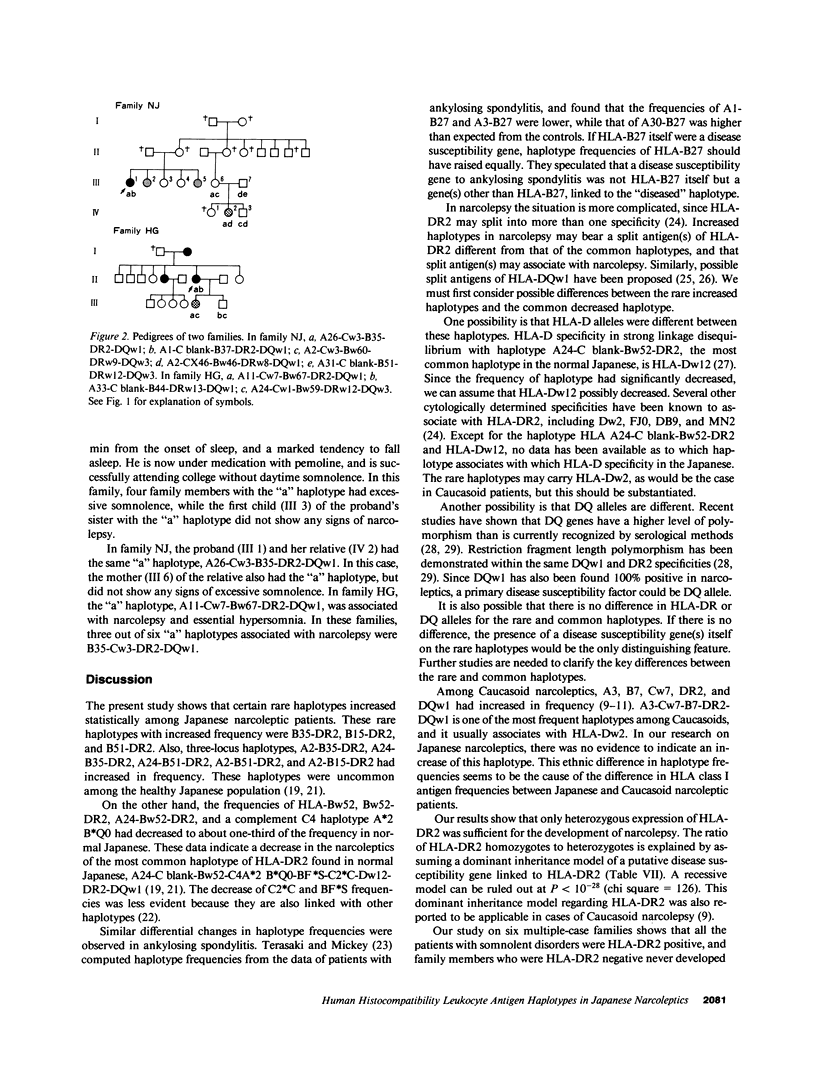
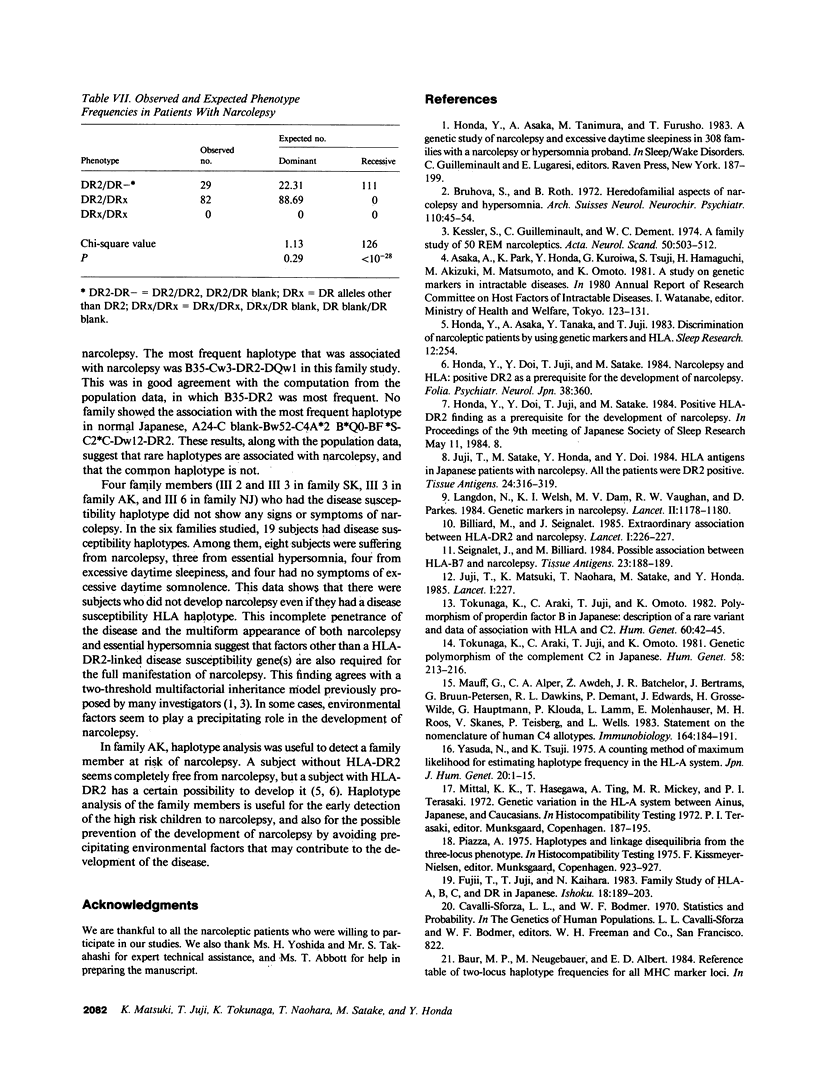
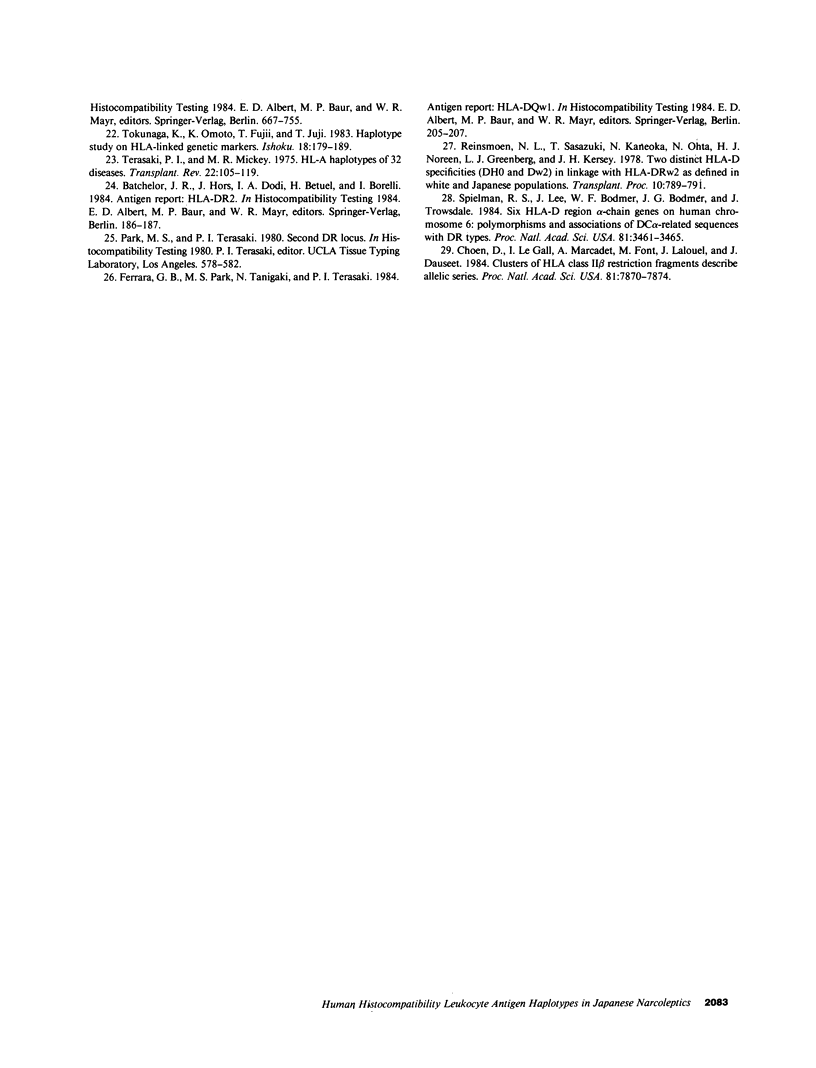
Selected References
These references are in PubMed. This may not be the complete list of references from this article.
- Cohen D., Le Gall I., Marcadet A., Font M. P., Lalouel J. M., Dausset J. Clusters of HLA class II beta restriction fragments describe allelic series. Proc Natl Acad Sci U S A. 1984 Dec;81(24):7870–7874. doi: 10.1073/pnas.81.24.7870. [DOI] [PMC free article] [PubMed] [Google Scholar]
- Juji T., Satake M., Honda Y., Doi Y. HLA antigens in Japanese patients with narcolepsy. All the patients were DR2 positive. Tissue Antigens. 1984 Nov;24(5):316–319. doi: 10.1111/j.1399-0039.1984.tb02144.x. [DOI] [PubMed] [Google Scholar]
- Kessler S., Guilleminault C., Dement W. A family study of 50 REM narcoleptics. Acta Neurol Scand. 1974;50(4):503–512. doi: 10.1111/j.1600-0404.1974.tb02796.x. [DOI] [PubMed] [Google Scholar]
- Langdon N., Welsh K. I., van Dam M., Vaughan R. W., Parkes D. Genetic markers in narcolepsy. Lancet. 1984 Nov 24;2(8413):1178–1180. doi: 10.1016/s0140-6736(84)92742-9. [DOI] [PubMed] [Google Scholar]
- Mauff G., Alper C. A., Awdeh Z., Batchelor J. R., Bertrams J., Bruun-Petersen G., Dawkins R. L., Démant P., Edwards J., Grosse-Wilde H. Statement on the nomenclature of human C4 allotypes. Immunobiology. 1983 Mar;164(2):184–191. doi: 10.1016/s0171-2985(83)80009-6. [DOI] [PubMed] [Google Scholar]
- Nevsimalova-Brůhova S., Roth B. Heredofamilial aspects of narcolepsy and hypersomnia. Schweiz Arch Neurol Neurochir Psychiatr. 1972;110(1):45–54. [PubMed] [Google Scholar]
- Reinsmoen N. L., Sasazuki T., Kaneoka H., Ohta N., Noreen H. J., Greenberg L. J., Kersey J. H. Two distinct HLA-D specificities (DHO and Dw2) in linkage with HLA-DRw2 as defined in white and Japanese populations. Transplant Proc. 1978 Dec;10(4):789–791. [PubMed] [Google Scholar]
- Seignalet J., Billiard M. Possible association between HLA-B7 and narcolepsy. Tissue Antigens. 1984 Mar;23(3):188–189. doi: 10.1111/j.1399-0039.1984.tb00031.x. [DOI] [PubMed] [Google Scholar]
- Spielman R. S., Lee J., Bodmer W. F., Bodmer J. G., Trowsdale J. Six HLA-D region alpha-chain genes on human chromosome 6: polymorphisms and associations of DC alpha-related sequences with DR types. Proc Natl Acad Sci U S A. 1984 Jun;81(11):3461–3465. doi: 10.1073/pnas.81.11.3461. [DOI] [PMC free article] [PubMed] [Google Scholar]
- Terasaki P. I., Mickey M. R. HL-A haplotypes of 32 diseases. Transplant Rev. 1975;22:105–119. doi: 10.1111/j.1600-065x.1975.tb01553.x. [DOI] [PubMed] [Google Scholar]
- Tokunaga K., Araki C., Juji T., Omoto K. Genetic polymorphism of the complement C2 in Japanese. Hum Genet. 1981;58(2):213–216. doi: 10.1007/BF00278714. [DOI] [PubMed] [Google Scholar]
- Tokunaga K., Araki C., Juji T., Omoto K. Polymorphism of properdin factor B in Japanese. Description of a rare variant and data of association with HLA and C2. Hum Genet. 1982;60(1):42–45. doi: 10.1007/BF00281262. [DOI] [PubMed] [Google Scholar]
- Yasuda N., Tsuji K. A counting method of maximum likelihood for estimating haplotype frequency in the HL-A system. Jinrui Idengaku Zasshi. 1975 Jun;20(1):1–15. [PubMed] [Google Scholar]


